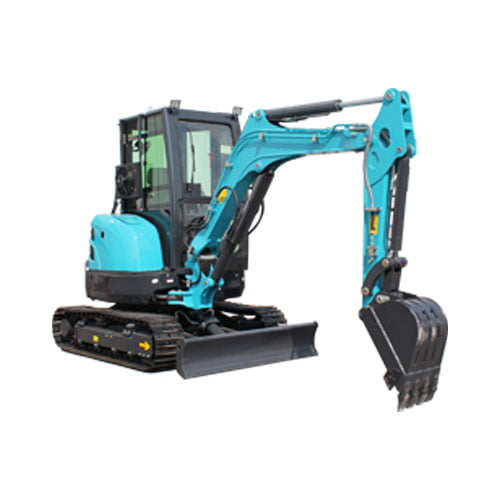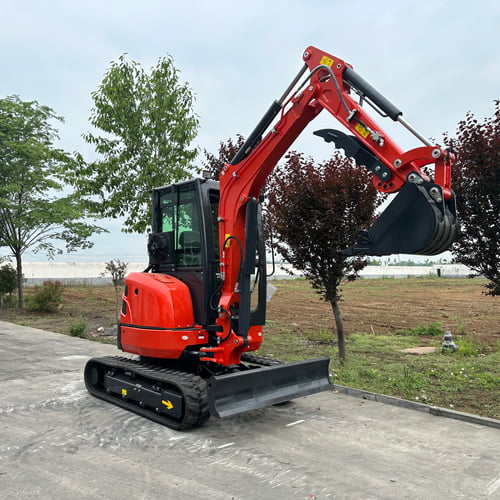Introduction
The undercarriage of an excavator is one of the most critical components, directly impacting the machine’s performance, durability, and efficiency. Proper understanding and maintenance of the excavator undercarriage can significantly extend the life of your equipment and reduce operational costs. In this comprehensive guide, we will delve into the essential aspects of excavator undercarriages, including their components, maintenance practices, common issues, and tips for choosing the right parts.
Components of an Excavator Undercarriage

The excavator undercarriage consists of various components that work together to ensure the machine’s mobility and stability. Understanding these components is crucial for effective maintenance and operation.
Track Chains and Links
The track chains and links form the backbone of the excavator undercarriage, providing the necessary traction and support. These components are subject to wear and tear, making regular inspection and lubrication essential.
Track Shoes
Track shoes are the external parts of the track that make direct contact with the ground. They come in different sizes and designs, tailored to specific ground conditions and applications.
Rollers and Idlers
Rollers and idlers support the track chains and ensure smooth movement. The rollers carry the weight of the excavator while the idlers guide the track chains.
Sprockets
Sprockets drive the track chains, converting the engine’s power into movement. Proper alignment and maintenance of sprockets are crucial for efficient operation.
Final Drives
The final drives are responsible for transmitting power from the hydraulic motor to the sprockets. They play a vital role in the overall performance and reliability of the excavator undercarriage.
Maintenance of Excavator Undercarriage
Proper maintenance of the excavator undercarriage is essential to prevent premature wear and costly repairs. Here are some key maintenance practices:
Regular Inspection
Regular inspection of the undercarriage components can help identify issues early and prevent major failures. Look for signs of wear, cracks, and misalignment.
Lubrication
Proper lubrication of the track chains, rollers, and idlers is crucial to reduce friction and wear. Use the recommended lubricants and follow the manufacturer’s guidelines.
Cleaning
Keeping the undercarriage clean is vital to prevent the buildup of dirt and debris, which can accelerate wear and cause damage. Regularly clean the undercarriage, especially after working in muddy or sandy conditions.
Tension Adjustment
Maintaining the correct track tension is important for optimal performance and longevity. Over-tightened or loose tracks can cause excessive wear and affect the machine’s stability.
Common Issues with Excavator Undercarriages
Understanding common issues with excavator undercarriages can help you take proactive measures to prevent them. Here are some common problems:
Track Wear
Track wear is a common issue caused by constant contact with the ground. Regular inspection and timely replacement of worn tracks can prevent further damage.
Misalignment
Misalignment of the track chains and rollers can lead to uneven wear and reduced efficiency. Regularly check the alignment and make necessary adjustments.
Component Damage
Components like rollers, idlers, and sprockets can suffer damage due to impact, excessive load, or poor maintenance. Inspect these parts regularly and replace damaged components promptly.
Choosing the Right Excavator Undercarriage Parts

Selecting the right undercarriage parts is crucial for maintaining the performance and longevity of your excavator. Consider the following factors:
Compatibility
Ensure that the parts you choose are compatible with your excavator model. Using incompatible parts can lead to poor performance and damage.
Quality
Invest in high-quality parts from reputable manufacturers. Quality parts are more durable and reliable, reducing the need for frequent replacements.Additionally, utilizing premium components can enhance the overall performance and efficiency of your equipment, ultimately leading to cost savings in the long run. Prioritizing quality in your purchases will help mitigate potential malfunctions and downtime, ensuring smooth operations and increasing the lifespan of your machinery. Remember, investing in top-notch parts is a smart decision that pays off both in terms of reliability and effectiveness.
Application
Choose parts that are suitable for your specific application and ground conditions. For example, heavy-duty track shoes are ideal for rocky terrain, while wider shoes are better for soft ground.Consider the length of the track shoes as well. Longer shoes provide better traction in muddy conditions, while shorter ones are more maneuverable on flat surfaces. Selecting the right track shoes for your equipment can enhance performance and ensure greater stability across various terrains.
Table: Common Excavator Undercarriage Parts and Their Functions
| Component | Function |
|---|---|
| Track Chains | Provide traction and support |
| Track Shoes | Make contact with the ground |
| Rollers | Support the track chains and carry the machine’s weight |
| Idlers | Guide the track chains and maintain tension |
| Sprockets | Drive the track chains |
| Final Drives | Transmit power from the hydraulic motor to the sprockets |
Conclusion
The excavator undercarriage is a vital component that requires proper understanding and maintenance to ensure optimal performance and longevity. By regularly inspecting, cleaning, and maintaining the undercarriage, you can prevent common issues and extend the life of your equipment. Choosing the right parts and understanding their functions also play a crucial role in maintaining the efficiency and reliability of your excavator. This comprehensive guide provides valuable insights into excavator undercarriages, helping you make informed decisions for your machinery.
FAQ
Q: How often should I inspect my excavator undercarriage?
A: Regular inspections should be conducted daily or weekly, depending on the intensity of use. More thorough inspections should be carried out monthly or after every significant project.
Q: What are the signs that my excavator undercarriage needs maintenance?
A: Common signs include unusual noises, uneven track wear, misaligned tracks, and visible damage to components such as rollers, idlers, and sprockets.
Q: How do I know if my track tension is correct?
A: Refer to your excavator’s manual for the recommended track tension. Typically, there should be a specific sag measurement between the track shoe and the top roller.
Q: Can I use aftermarket parts for my excavator undercarriage?
A: Yes, but ensure that the aftermarket parts are high quality and compatible with your excavator model to avoid performance issues and potential damage.
Q: What is the average lifespan of an excavator undercarriage?
A: The lifespan of an undercarriage varies depending on usage, maintenance, and working conditions. On average, undercarriage components can last between 1,200 to 2,000 hours with proper care.




